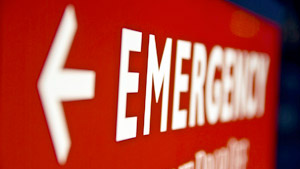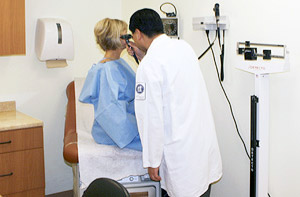About The Stroke Center

Prompt Diagnosis

MRI - Diagnosis of Ischemic Stroke
The rapid, coordinated efforts of the EMTs and emergency room physicians and staff quickly identify stroke patients and fast-track them to appropriate medical and surgical interventions.Nearly 50% of patients treated for stroke within the first 3 hours experience little and sometimes no physical or speech deficit.
Advanced Imaging
Advanced multi-modal diagnostic imaging, such as CT (computed tomography), CTA (CT angiography), MRI (magnetic resonance imaging) and MRA (MR angio-graphy), quickly tells us the type of stroke, which vessel is blocked, the extent of damage, and location of viable tissue.
Other sophisticated brain imaging studies include angiography, TCD (transcranial Doppler), EEG (electroencephalography), TEE (transesophageal echocardiography) and carotid duplex.
Multidisciplinary Stroke Team
The SUNY Downstate Stroke Center focuses on quality patient care using a multi-disciplinary approach. Our physicians, many of them recognized among the Best Doctors in America®, include specialists in internal, respiratory, critical care and emergency medicine; neurology; neurosurgery; neuroradiology; cardiology; and physical medicine and rehabilitation.
We also have stroke nurses, neuropsychologists, physical and occupational therapists, speech therapists, technicians, social workers and other healthcare professionals who are highly trained and devoted to the expert care of patients with stroke.
To see a list of our stroke team, visit our About Our Team webpage.

One of the stroke team doctors examines a patient in our state-of-the-art stroke center.
State-of-the-Art Stroke Care
In addition to the clot-dissolving drug tPA administered within the first 3 hours for acute ischemic stroke, advanced endovascular techniques can expand the window of treatment in some stroke cases. We are one of the few New York area hospitals offering patients cutting-edge interventional neuroradiology and intra-arterial therapy.
Interventional Stroke Therapy
Catheters (thin, hollow tubes) are inserted through the groin and guided via advanced imaging to treat problems endovascularly (from inside the blood vessel). Advantages include local or regional anesthesia instead of general anesthesia, a shorter recovery time, less pain, smaller incisions and less stress on the heart.
- Intra-arterial Thrombolysis - In this procedure, a small catheter is inserted into the blood vessels of the brain during cerebral angiography to deliver clot-dissolving medications directly to the blocked blood vessel.
- Neuroradiology - Our interventional specialists use the latest tools and technologies for the treatment of aneurysms, arterial venous malformations (AVMs), acute stroke, carotid stenosis and other vascular disorders of the brain.
Rehabilitation
Physical and mental deficits from stroke range from mild to severe. The most common results of a stroke are hemiparesis (paralysis on one side of the body), aphasia (inability to speak or understand language), learning difficulties, memory loss, behavioral/emotional changes and loss of motor skills.
Physiatrists and therapists specialize in helping stroke patients return to the highest possible level of day-to-day functionality and independence. Rehabilitation is comprehensive, ranging from intense therapy in the hospital to outpatient rehabilitation.
Research Center
As the only University Hospital and clinical stroke research center in Brooklyn, and one of the leading cerebrovasular research centers in the country, we are able to provide our patients advanced or investigational stroke therapies not always available at other stroke treatment centers.

A major part of our research focuses on imaging, genetics and outcomes (recovery predictors). The demographic diversity of Brooklyn affords us a uniquely rich clinical research opportunity to identify risk factors and genetic determinants of stroke in a multi-ethnic population.
Community Outreach
One of our primary goals is to stop strokes before they occur. Our community outreach program provides stroke prevention education and screening opportunities. Our support group, the Brooklyn Downstate Stroke Club, meets once a month to provide continuing education, comfort, counsel and encouragement to stroke patients and their loved ones.